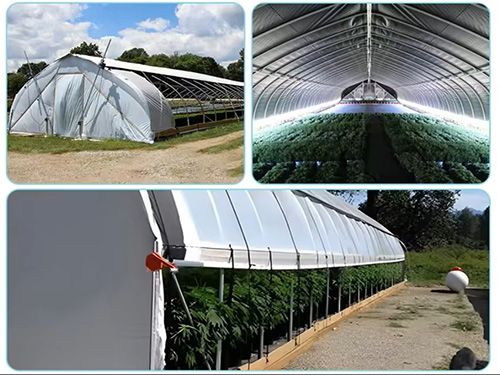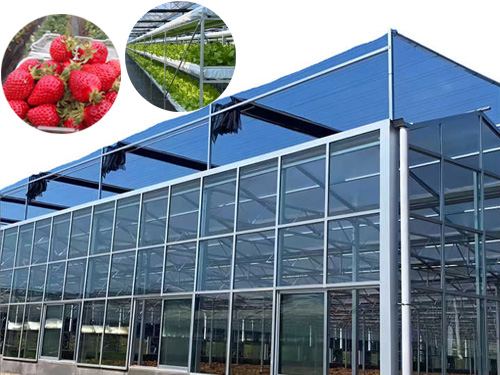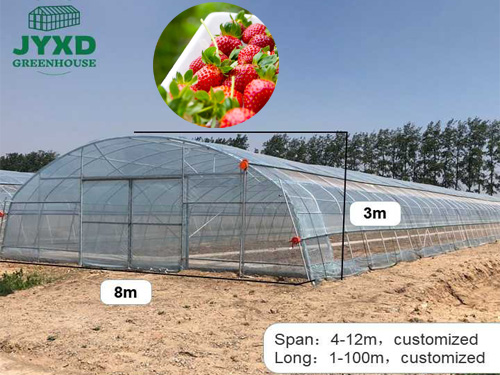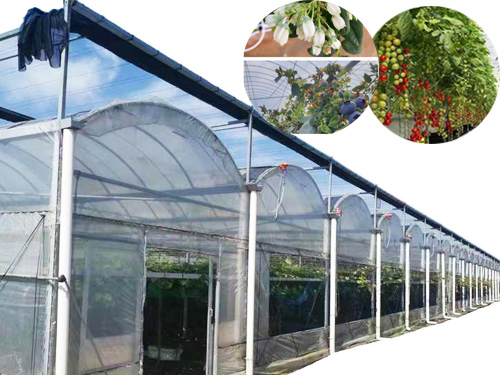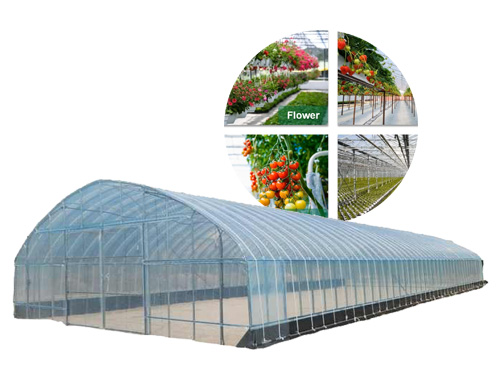NEWS DETAILS
NEWS INFORMATION
Combining Hydroponics and Soil Cultivation Effectively in Greenhouses
AUTHOR:jyxd-greenhouse DATE:2025-01-15 13:08:51 HITS:67
farming has evolved over the years to incorporate various innovative growing techniques. One of the most effective methods that has gained popularity is the combination of hydroponics and soil cultivation. By integrating both systems, greenhouse operators can optimize plant growth, improve yields, and enhance resource efficiency. In this article, we will explore the benefits of combining hydroponics and soil cultivation in greenhouses, as well as practical strategies for implementing this hybrid approach.
Why Combine Hydroponics and Soil Cultivation?
Each growing method—hydroponics and soil cultivation—has its own set of advantages and challenges. Hydroponics, which involves growing plants without soil using a nutrient-rich water solution, offers precise control over nutrients and water. Soil cultivation, on the other hand, provides a natural and balanced environment for plant roots. By combining the two, greenhouse operators can take advantage of the best features of both systems, offering a flexible, efficient, and sustainable approach to farming. Here are some reasons why combining the two methods makes sense:
· Resource Optimization: Hydroponics uses less water than traditional soil cultivation, but soil offers essential micro-nutrients. Combining the two systems allows for efficient water use while providing plants with a wide range of nutrients.
· Increased Plant Variety: Some plants thrive better in hydroponic systems, while others prefer soil. A hybrid approach allows for the cultivation of a diverse range of crops with varying needs.
· Better Pest and Disease Control: While hydroponics reduces the risk of soil-borne pests, soil cultivation can support beneficial organisms that protect plants from pests. Combining both systems offers a balanced environment for pest management.
Advantages of Hydroponics in Greenhouses
Hydroponics is an increasingly popular method in greenhouse farming due to its ability to provide controlled, efficient growing conditions. Some key advantages include:
1. Water Efficiency
Hydroponic systems use significantly less water compared to traditional soil-based growing methods. In a greenhouse, where water conservation is essential, hydroponics can reduce water usage by up to 90%. Water is continuously recycled in the system, making it more efficient.
2. Faster Growth
Hydroponic systems provide plants with immediate access to nutrients, leading to faster absorption and quicker growth. This is particularly beneficial for high-demand crops that require rapid turnover, such as leafy greens and herbs.
3. Space Optimization
Hydroponic systems are more space-efficient than traditional soil cultivation. Vertical hydroponic systems, in particular, maximize the available growing area, making them ideal for greenhouses with limited space.
4. Reduced Pest and Disease Pressure
Since hydroponic systems don’t rely on soil, many soil-borne pests and diseases are less of a concern. This reduces the need for pesticides and makes it easier to grow crops in a cleaner, controlled environment.
Benefits of Soil Cultivation in Greenhouses
Soil cultivation, while more traditional, still offers numerous benefits for greenhouse farming. These benefits include:
1. Natural Nutrient Source
Soil provides plants with essential nutrients and minerals that hydroponic systems may not always deliver in the same diversity or concentration. This can result in more complex flavors and nutritional profiles in certain crops.
2. Better Root Structure
Plants grown in soil develop a more natural and robust root structure. This can lead to healthier plants that are better able to support themselves and resist stress.
3. Beneficial Microorganisms
Soil supports a variety of beneficial microorganisms that help break down organic matter and enhance nutrient availability. These microorganisms also protect plants from harmful pathogens and improve soil health over time.
4. Cost-Effective for Larger Crops
Soil cultivation can be more cost-effective for larger, long-term crops such as tomatoes, cucumbers, and peppers. While the initial setup costs for hydroponics can be higher, soil cultivation offers lower ongoing maintenance costs.
Strategies for Combining Hydroponics and Soil Cultivation
To maximize the benefits of both systems, greenhouse operators can adopt various strategies that integrate hydroponics and soil cultivation. Here are some key approaches to combining the two:
1. Zoning the Greenhouse
One effective strategy is to zone the greenhouse into sections for each cultivation method. For example, one area could be dedicated to hydroponic systems for fast-growing crops like lettuce, herbs, and strawberries, while another section could be used for soil-based crops like tomatoes, peppers, and carrots. This allows for efficient use of space and resources while keeping each system optimized for the specific crop requirements.
2. Vertical Hydroponics with Soil Beds
In some cases, greenhouse operators use vertical hydroponic systems above traditional soil beds. This allows crops like leafy greens and herbs to be grown hydroponically while larger crops with deep root systems, such as tomatoes or cucumbers, are cultivated in soil. The vertical hydroponics systems make use of space above the soil beds, optimizing the use of the greenhouse environment.
3. Intercropping and Companion Planting
By strategically pairing hydroponic and soil-based plants, growers can take advantage of complementary growing environments. For example, hydroponically grown herbs can be paired with soil-grown vegetables like tomatoes or peppers. This method allows plants with different growth requirements to thrive in the same space while minimizing the impact of pests and diseases.
4. Water and Nutrient Management
A hybrid greenhouse system must also focus on efficient water and nutrient management. Hydroponic systems require a steady supply of water and nutrients, while soil-based systems rely on regular irrigation and natural soil amendments. Using a shared water supply that integrates both systems allows for efficient use of resources. Additionally, nutrient runoff from hydroponic systems can be filtered and reused in soil-based systems, reducing waste and improving sustainability.
Considerations for Successfully Combining Both Systems
While combining hydroponics and soil cultivation offers numerous benefits, there are a few factors to consider for successful integration:
· Space and Layout: A clear layout that accommodates both systems is essential. Careful planning ensures that each method receives the proper attention and resources without interfering with one another.
· Environmental Control: Both hydroponics and soil cultivation systems require careful environmental control in terms of temperature, humidity, and light. Automated systems can help manage these factors for optimal growth.
· Initial Setup and Costs: Setting up a hybrid system can involve higher upfront costs, especially if additional equipment or infrastructure is needed. However, the long-term benefits in terms of yield and resource efficiency can offset these costs.
Conclusion
Combining hydroponics and soil cultivation in greenhouses allows growers to take advantage of the strengths of both methods. Hydroponics offers water efficiency, faster growth, and pest control, while soil cultivation provides natural nutrients, a robust root system, and cost-effectiveness for larger crops. By integrating these systems strategically, greenhouse operators can optimize their growing environments, increase crop diversity, and maximize yields. With careful planning and resource management, combining hydroponics and soil cultivation can be a sustainable and profitable approach to modern greenhouse farming.
Hebei Juyou Xinda Greenhouse Facilities Co.,Ltd.
Copyright © 2024-2025 https://www.jyxd-greenhouse.com. All Rights Reserved Hebei Juyou Xinda Greenhouse Facilities Co.,Ltd.Copyright





 Current Location:
Current Location:


